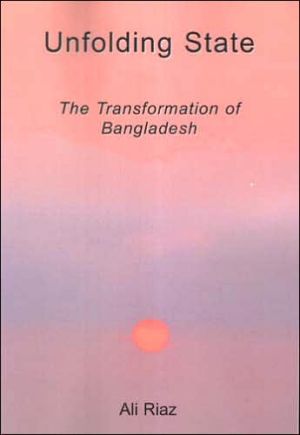

 |

|

The average rating for Unfolding State: The Transformation of Bangladesh based on 2 reviews is 4 stars.
Review # 1 was written on 2014-03-11 00:00:00 James Bonkovsky James BonkovskyA superb academic monograph. Meticulously researched and cogently written. Zamindar makes a compelling case that the nation-states of India and Pakistan were not yet fully formed in August 1947 when the subcontinent was partitioned and these two countries attained independence. Rather, this was a long partition as in the years immediately following Partition, both India and Pakistan struggled to control the flow of people, police their borders, and articulate their definitions of citizenship. Zamindar traces the creation of refugees in both India and Pakistan, the institution of the permit system for travel between the two countries, the implementation of legislation dealing with evacuee property as well as citizenship, and finally, the institution of the passport. She argues that for many, the real partition came after August 1947, in 1948 with the commencement of the permit system as restrictions were placed on border crossings. Zamindar's focus is on Muslim refugees, contending that how they were treated shaped both Pakistan and India. She shows that the Indian state/bureaucracy through the creation of Muslim zones in Delhi, its enactment of the travel permit and then the passport, as well as its execution of evacuee property laws was instrumental in their displacement. However, the Pakistani state did not want these muhajirs (emigrants/refugees) either, fearing that they would strain the already fragile economy. Thus, Pakistan colluded with India to implement the permit system and then pioneered the creation of the passport so as to more firmly define citizenship and stem the tide of Muslims emigrating from India to Pakistan. However, Zamindar very expertly elucidates the ideological bind the new leaders of Pakistan were in with regards to the muhajirs. Pakistan was ostensibly created to serve as a Muslim homeland, and those Muslims who had already emigrated to Pakistan exerted pressure on their new leaders to keep the border open to further refugee flows. Thus, the leaders of Pakistan continued to pay lip-service to the two-nation theory, while taking practical steps to control the influx of muhajirs. Clearly influenced by Foucault, Zamindar deftly demonstrates how permits and passports also served as ways for India to surveil Muslims. Furthermore, those Muslims who chose to remain in India or those who wished to return from Pakistan were made to prove their loyalty. While it was a priority of the Indian state to settle non-Muslim (Hindu and Sikh) refugees fleeing from partition violence in Pakistan, Muslims who sought to return were not welcomed with open arms. When subjected deportation or the confiscation of their property under evacuee property legislation, they asserted their love and fealty to India. Many claimed to have always supported the Indian National Congress over the Muslim League. Even Urdu newspapers that pointed out the injustice and discrimination Muslims in India faced, tempered their language so as not to the invite the ire of the government or accusations of disloyalty. Muslim government bureaucrats had to report and sometimes bring back relations they had in Pakistan to demonstrate their loyalty to India. The Muslim minority in India in the years after Partition was marginalized from the public sphere and disciplined into the discourse and reality of the nation-state. While I do not dispute any of Zamindar's arguments, I wish she had spent more time with Pakistan's religious minorities. She does a good job of showing why many Hindus fled Karachi, but then does not in any systematic way discuss the conditions faced by those who stayed or those who sought to return like she did with Indian Muslims. Zamindar mentions that under the "hostage theory" those Hindus who remained in Pakistan were subjected to the same discriminatory evacuee property legislation as Indian Muslims but does not elaborate. Zamindar aims to illuminate the impact of this long partition on present day India and Pakistan. She quite effectively limns the history of the cleavage in Pakistani society between muhajirs and non-muhajirs, a cleavage that still resonates today. But I think an equally important legacy of the long partition on contemporary Pakistan was how it was almost emptied of religious minorities (non-Muslims) and the insecurity and persecution faced by those that remained. But overall this was an excellent book and I learned a lot from it. |
Review # 2 was written on 2018-07-27 00:00:00 Jaskaran Singh Jaskaran SinghThe book will take you deep into how the violence spread and what was the effect of partition on Muslims in India and Hindus in Pakistan. The book has several excerpts of interviews of the author with the people who survived the partition violence . Also showcases how the government of both the states responded to the mass exodus of people. |
CAN'T FIND WHAT YOU'RE LOOKING FOR? CLICK HERE!!!